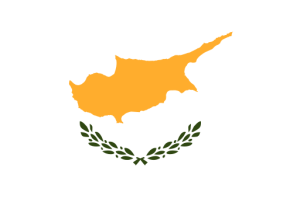Cathedral of St. George – Cape Town
On Sunday 20 July, Reverend Fr. Nikolaos Giamourides, and Deacon Fr. Michael Simos officiated at the service of the Holy Eucharist followed by a memorial service in remembrance of those who lost their lives during the 1974 Turkish Invasion of Cyprus, in the presence of Consul Thomas Matsoukas, consulate of Greece in Cape Town and Mr Nassos Martalas, president of the Hellenic Community of Cape Town.
In his address after the service, Fr. Nikolaos gave a brief outline of the history of the event. He said that today as Orthodox Christians we remember and pray for the souls of those who lost their lives tragically in Cyprus in 1974. He went on to say that we are living in very difficult times and that Christianity is being attacked everywhere in the world and that it is essential for all Greeks from Greece and Cyprus living in the Diaspora to honour our history and to keep our faith alive. We are a nation with strong Orthodox roots and we have a responsibility to hand this down to future generations.
Church of Saint Nicholas – Durban KZN
Professors of Byzantine Art visit South Africa
He ended by mentioning that the Cypriot Embassy in Pretoria was instrumental in organising the visit of two Byzantologists. Their work involves identifying and recovering artefact which have been looted from Churches in Cyprus. They are also appealing to everyone to submit photographs which were taken in the churches in occupied territory prior to 1974.
“Following the invasion of Cyprus in 1974 by Turkey and the occupation of the northern part of the island, churches belonging to the Cypriot Orthodox Churches have been looted in what is described as “…one of the most systematic examples of the looting of art since World War II”. Several-high-profile cases have made headline news on the international scene. Most notable was the case of the Kanakaria mosaics, 6th century AD frescos that were removed from the original church, trafficked to the USA and offered for sale to a museum for the sum of US$20,000,000. These were subsequently recovered by the Orthodox Church following a court case in Indianapolis.
The looting of northern Cyprus by the Turkish forces has been described as “one of the most systematic examples of the looting of art since World War II”. Archaeological sites, museums, churches, monasteries, castles, libraries, and private art collections have all been affected by the looting of the northern area of Cyprus; icons, frescoes, archaeological artefacts, and cultural heritage have been stripped from areas around the island and have been taken to places all over the world or simply destroyed. Some believe that this has been done to ‘Turkify’ the northern region of the country and erase the characteristics of the Cypriot predecessors, while people like Aydin Dikmen have been working to make money off of cultural heritage artefacts by selling them in international markets. The amount of destruction of Islamic sites and artefacts in the south is not even comparable to the looting and destruction of the north; previous Christian sites in the north have been destroyed or transformed for other uses, while the icons and mosaics have been dismantled into smaller pieces, helping them to deteriorate at a fast pace and eventually be lost forever.
There have been three major recoveries of church treasures, and in each case the artworks, particularly the frescoes and mosaics, have been damaged and are in urgent need of conservation”. Reference: wikepedia



